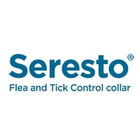
Hair loss in dogs, also known as canine alopecia, is a common condition that pet parents often notice when their dog starts developing bald spots or thinning patches of fur. While some seasonal shedding is perfectly normal, hair loss in patches usually signals an underlying health issue that requires attention.
If you’ve been asking yourself, “Why is my dog losing hair in patches?”, this blog will guide you through the possible causes, symptoms to watch for, and treatment options to help restore your dog’s healthy coat.
What Is Dog Alopecia?
Alopecia in dogs refers to partial or complete loss of hair. Unlike regular shedding, alopecia often results in visible bald spots, thinning areas, or irregular patches where the fur doesn’t grow back as expected. It can appear suddenly or develop gradually over time, depending on the root cause.
It’s important to understand the distinction between regular shedding and unusual hair loss. Seasonal shedding affects the entire coat, whereas alopecia typically affects specific areas, such as the back, belly, tail, or around the eyes and ears.
Common Causes of Hair Loss in Dogs
There are several reasons why dogs may lose hair in patches. Certain causes are minor and not a serious concern, whereas others may need professional veterinary care. Below are the most common ones:
1. Allergies
- Dogs can be allergic to a variety of substances, including food, pollen, mold, dust mites, and even flea bites.
- Allergic reactions often cause itchy skin, redness, and hair loss due to constant licking and scratching.
- Flea allergy dermatitis is one of the most common triggers for patchy bald spots.
2. Parasites
- Fleas, ticks, and mites (like mange mites) irritate the skin and lead to excessive scratching.
- Mange, caused by mites, often results in scaly patches of skin with significant hair loss.
- Regular flea and tick prevention is crucial for preventing parasite-related alopecia.
3. Infections
- Bacterial or fungal infections, such as ringworm, can cause localized areas of baldness.
- Infected skin may appear red, flaky, or crusty.
- These infections are usually treatable with prescribed antifungal or antibacterial medications.
4. Hormonal Imbalances
- Conditions like hypothyroidism (underactive thyroid) or Cushing’s disease can lead to thinning hair and patchy loss.
- Hormonal problems often cause symmetrical hair loss on both sides of the body.
- Blood tests are usually required for diagnosis.
5. Poor Nutrition
- A diet lacking essential nutrients, such as omega-3 fatty acids, vitamins, and minerals, can impact coat health.
- Dogs on unbalanced diets may develop dry, brittle fur and eventual bald spots.
6. Stress or Anxiety
- Just like humans, dogs can over-groom when stressed or anxious.
- Repeated licking or chewing of one spot can create bald patches known as “lick granulomas.”
7. Genetics
- Some breeds, such as Chihuahuas, Dachshunds, Greyhounds, and Dobermans, are more prone to hereditary alopecia.
- In these cases, bald patches may not be harmful, though they can affect appearance.
Symptoms to Watch For
When your dog is losing hair in patches, you may also notice other signs that help identify the underlying problem. Look out for:
- Red, inflamed, or scaly skin
- Excessive scratching, licking, or chewing
- Scabs, bumps, or lesions on the skin
- Unpleasant odor from the skin (possible infection)
- Weight changes, lethargy, or increased thirst (possible hormonal issues)
If any of these symptoms occur alongside hair loss, it’s best to consult a veterinarian for proper diagnosis.
Treatment Options for Patchy Hair Loss
The best treatment depends on the underlying cause. Your veterinarian may recommend one or more of the following:
1. Flea and Tick Control
- If parasites are the culprit, flea and tick preventatives (topical treatments, oral medications, or collars) will help eliminate the issue.
- Regular preventive care ensures your dog stays protected year-round.
2. Medications for Allergies
- Antihistamines, corticosteroids, or special allergy medications may be prescribed.
- Sometimes, your veterinarian might recommend an elimination diet to help pinpoint specific food ingredients causing the reaction.
3. Treatment for Infections
- Antifungal creams, medicated shampoos, or antibiotics may be prescribed depending on whether the infection is bacterial or fungal.
- Consistent treatment is crucial in preventing recurrence.
4. Hormonal Therapy
- Dogs diagnosed with hypothyroidism may require daily thyroid medication.
- Cushing’s disease often requires long-term medication to manage hormone levels.
5. Dietary Improvements
- Switching to a high-quality, balanced diet rich in omega-3 fatty acids can significantly improve skin and coat health.
- Supplements like fish oil may also help reduce inflammation and promote healthy fur growth.
6. Stress Management
- If hair loss is due to anxiety, providing more exercise, mental stimulation, and a calming environment can help.
- In severe cases, vets may recommend anti-anxiety medications or behavioral training.
Preventing Hair Loss in Dogs
Although every cause of hair loss can’t be avoided, you can take certain measures to lower the chances of it happening.
- Make sure your dog stays protected year-round by following a consistent flea and tick prevention routine.
- Provide a nutritionally balanced diet with skin-supporting nutrients.
- Bathe your dog with vet-approved shampoos that maintain natural skin oils.
- Schedule routine veterinary check-ups to catch issues early.
- Minimize stress by providing your dog with sufficient exercise, playtime, and affection.
When to See a Veterinarian
If your dog’s hair loss:
- Appears suddenly,
- Covers large areas,
- Is accompanied by redness, sores, or foul odor, or
- It is linked with changes in appetite, energy, or behavior,
… then professional veterinary care is strongly recommended. Early treatment ensures your dog feels comfortable and prevents more serious complications.
Final Thoughts
Patchy hair loss in dogs can be alarming for pet owners, but in most cases, it can be managed or treated with the proper care. From allergies and parasites to infections or hormonal imbalances, the causes vary widely. Identifying the root issue with the help of a veterinarian is the key to helping your dog regain a shiny, healthy coat.
By providing good nutrition, preventive care, and timely medical attention, you can keep your furry friend happy, comfortable, and looking their best.






